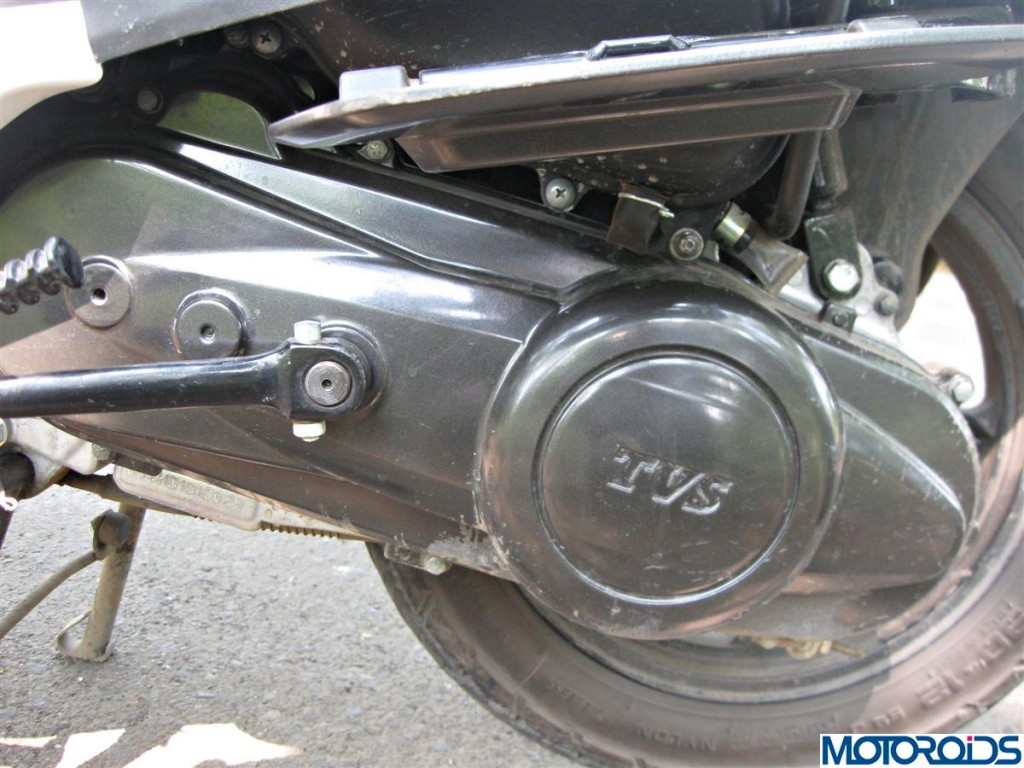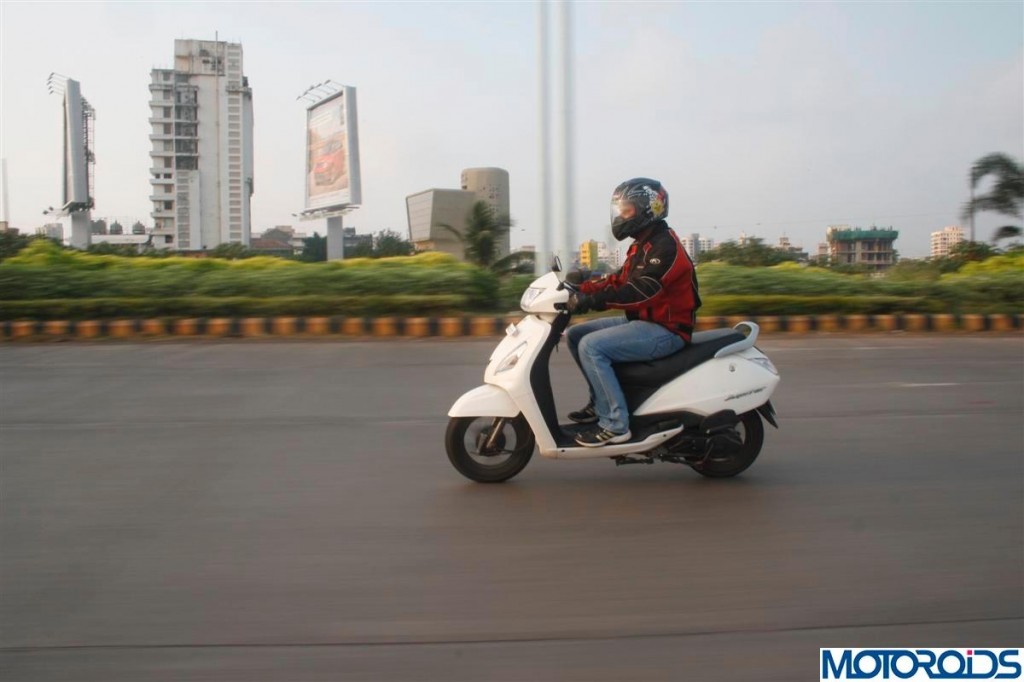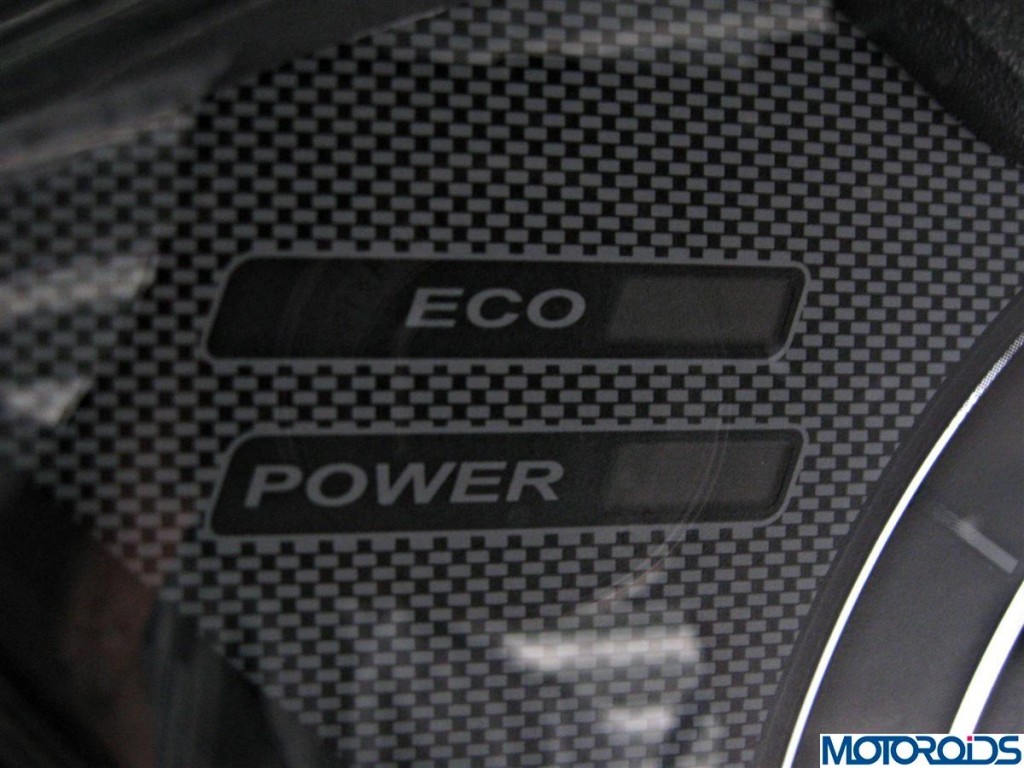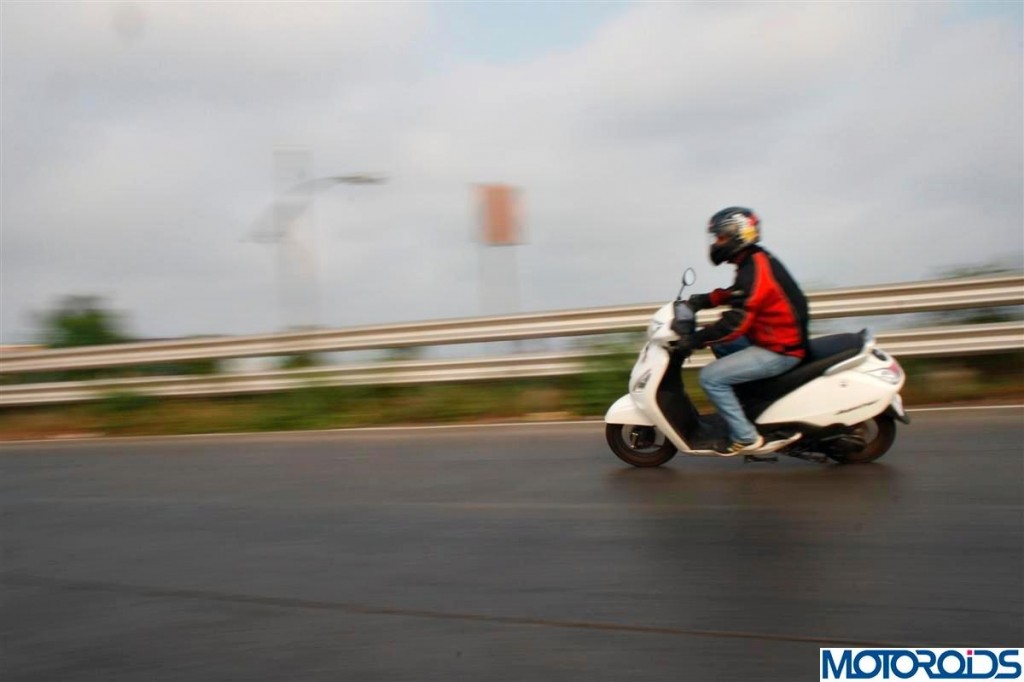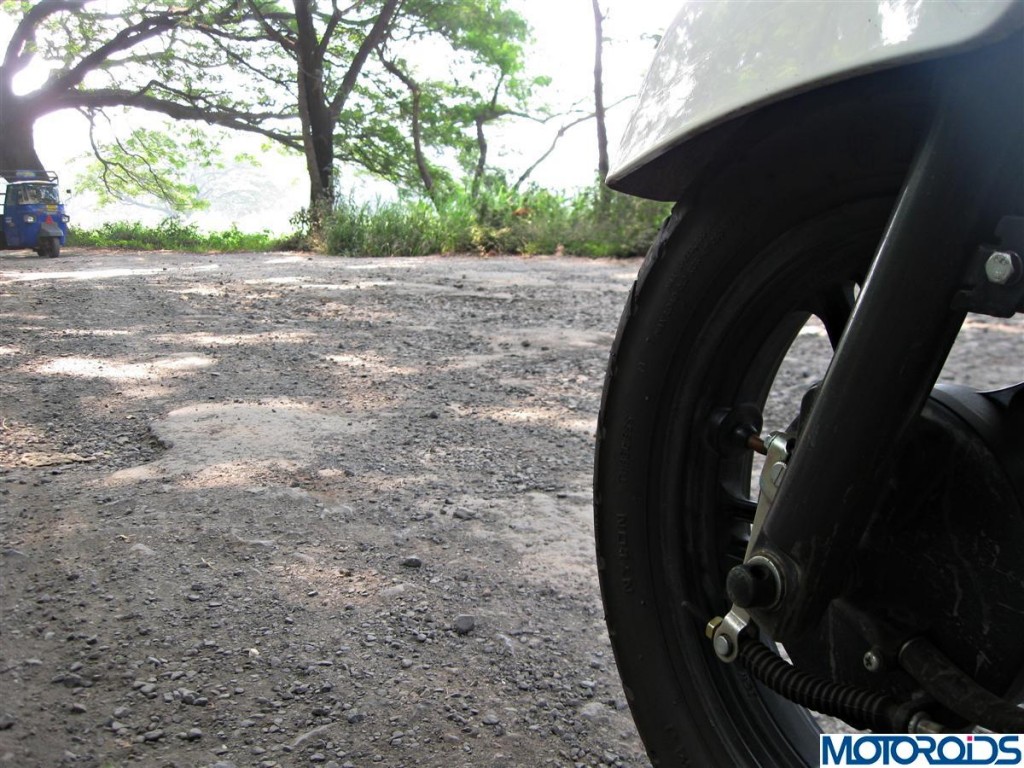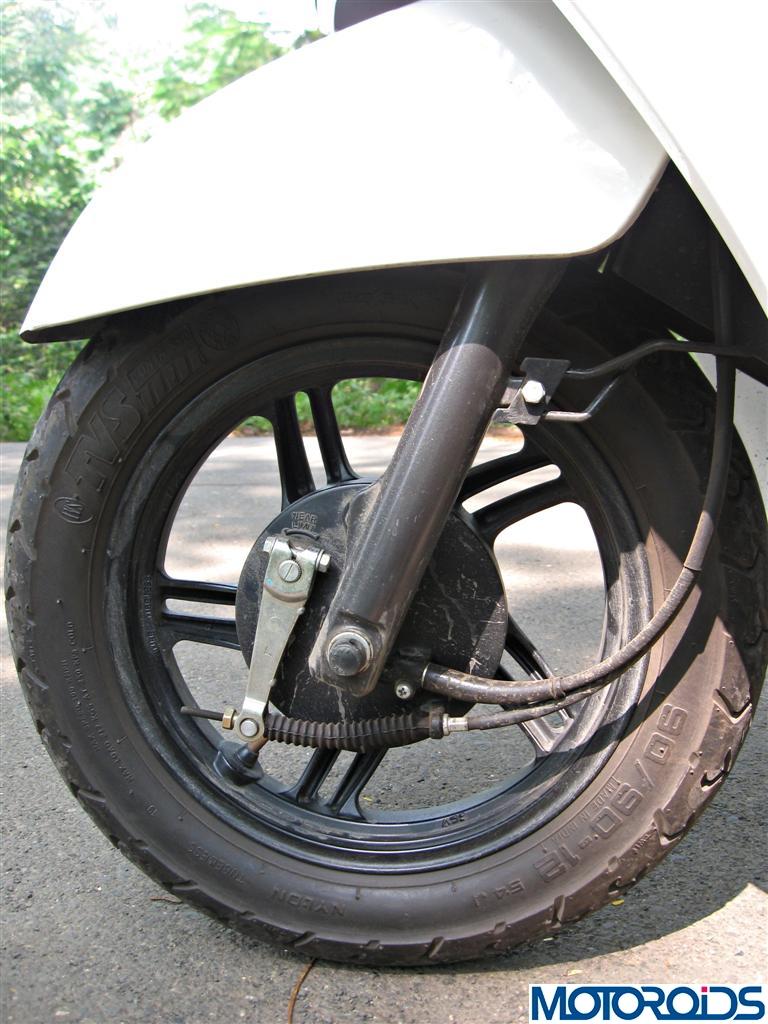ENGINE PERFORMANCE AND MILEAGE
The TVS Jupiter adopts the Wego’s 109.7cc Single Cylinder CVTi engine with peak power and torque output figures of 8 bhp @ 7500 rpm and 8 nm @ 5500 rpm respectively offering enough punch to ferry two reasonably sized individuals with minimum fuss. Though slightly lazy towards to lower spectrum of rev range, the Jupiter makes up for it at the higher end. Once in rhythm, the Jupiter pulls surprisingly well till the 80 mark before maxing out at a speedo indicated 84 kph. Where other scooters feel slightly stressed going north of 60 kph, the TVS Jupiter builds up on the numbers rather quickly. The engine is refined and only starts to show resistance once the needle is past the 80 kph mark – an impressive performer!
Talking of fuel consumption, the TVS Jupiter mileage figures stood at 46 kpl during the 300+ kms run as against TVS claim of 62. We’re not blaming the difference in figures considering the Jupiter was being ridden two up most of the time and put to extended high speed highway runs. In the hands of a more considerate rider, we expect the figure to cross the 50 kpl mark. The TVS Jupiter comes with an ECO and POWER indicator on the dash. The ECO indicator stays on under mild acceleration and speeds upto 50 kph. Twist that right hand a bit more and the POWER mode lights up. It’s a simple function, which may work well for those extremely sensitive towards fuel efficiency figures. With a set of ears trained for engine sound, though, you wouldn’t need that light.
HANDLING AND BRAKING
Handling of the TVS Jupiter takes some time getting used to before your start throwing it around corners disdainfully. It’s got its own dynamic algorithm which is different from some other scooters which you may have been riding all this while. That doesn’t mean the Jupiter isn’t inferior or anything, it just requires you to log a few kilometers before you get used to its own definition of balance and poise.

Running on 12 inch “TVS Conta 550” tubeless tyres, the Jupiter offers adequate road grip. The telescopic suspension up front and a single gas charged shock at the rear provides sufficient damping going over the routine urban undulations but tends to bounce a bit while passing over broken patches and takes that wee-bit extra time to regain composure. Under usual road conditions, the suspension does its duty rather well extending a comfortable ride for both rider and pillion.
In the Jupiter braking department, the Jupiter felt slightly subdued in terms of extreme performance. By itself, the Jupiter’s brakes are pretty good, there is no fade or spongy feel to them, and it tops quite a few competitors in the segment. However, we felt the balance between the front and the rear brakes was missing. This becomes more evident as we have ridden few scoots with combined braking system, which is actually very effective in scrubbing speed off very quickly. With the Jupiter, the bite at the rear appears to be on the higher side while the front lacks the required bite and feel. We ended up locking the rear wheel a couple of times while decelerating hard. A disc brake upfront should take care of this to an extent.
NEXT PAGE FOR CONCLUSION, SPECIFICATIONS AND IMAGE GALLERY


